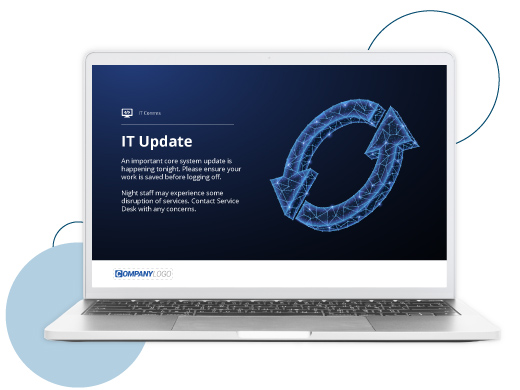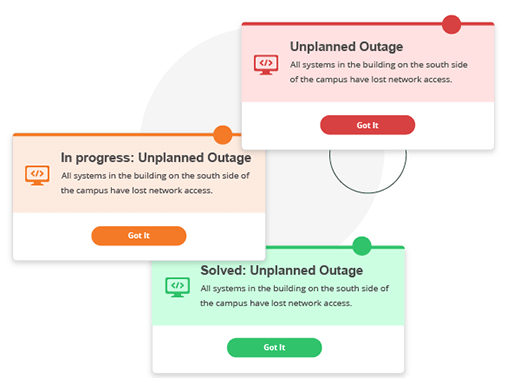
Staff are more demanding than ever of their IT teams. Uptime and seamless delivery alone don’t cut it. They also expect a great end user experience.
User experience is about solving problems and helping people attain goals. Staff are accustomed to this when they consume tech at home – they expect it at work too. Only 50% of staff and 64% of managers are satisfied with the resources they have at their disposal to learn how to use new technology.
But delivering a great end user experience doesn’t only benefit staff. It benefits the IT team too. After all, what makes end users happy makes IT look good – in the eyes of staff and management.
This is your blueprint to improving the IT team reputation, and maximizing company investment in information technology, by focusing on the end user experience.

1. User-focused solutions
Focusing on end users makes IT seem invested in both people and technology solutions. Not just delivering the right tools for the job – delivering tools that are also intuitive and user-friendly.
A cumbersome process or clunky UI will cause staff to develop negative associations fast. It’s then much harder to change their opinion and achieve customer satisfaction.
How? Delivering IT services doesn’t stop at implementation. Survey end users to measure sentiment and track trends in real time. It’s a form of digital experience monitoring that reassures IT Managers of what’s working – and alerts them to what isn’t.
Share the results widely so that staff have visibility of the outcomes and confidence in improvements.
2. Reducing information-overload
Every day staff are overloaded with messages of little relevance. It’s increasingly hard for them to know what’s important. Studies have proved how frustrating this information overload is.
IT teams that not only avoid adding to this ‘infobesity’, but communicate clearly and helpfully, will be those that win the hearts and minds of end users.
How? Rethink your IT communication. Use dedicated message formats and consistent design so that users immediately recognize them and understand the content.
Pre-configured IT notification templates can help your team get up and running with this fast.

3. Unique information needs
Staff often have a perception of IT teams as obstacles or gatekeepers. Hardly surprising when the average lost time per IT request globally is 3 hours and 12 minutes.
Focusing on end users allows IT Managers to reposition the department as productivity-enhancing problem-solvers. You want to be seen as business enablers, delivering genuine value.
How? Be proactive. Spend time with other departments to understand what they need and how they consume information.
Call center staff are constantly talking to customers; remote staff work in satellite or home offices; younger staff are skimmers of content. How do the needs of each differ? Satisfying these needs demonstrates your desire to improve their jobs.

4. Cross-team relations
It’s common for tensions to develop between IT and other teams. Human Resources and Internal Communications often place demands on IT Managers to deliver the systems or tools they need.
If either side doesn’t handle these discussions well, relations can sour, projects are impacted and the IT reputation suffers. Adopting an end user focus improves the likelihood of a successful outcome.
How? Get involved in project scoping with other teams early. Be clear with IT requirements and timeframes – no unpleasant surprises.
Building bridges in this way makes IT seem approachable, reliable and accountable. Just the way they should be.
Focusing on end user experience is one of the most effective ways to lift the reputation of IT teams. When staff are satisfied, management take notice – and IT teams can bask in the pride of a job well done.



